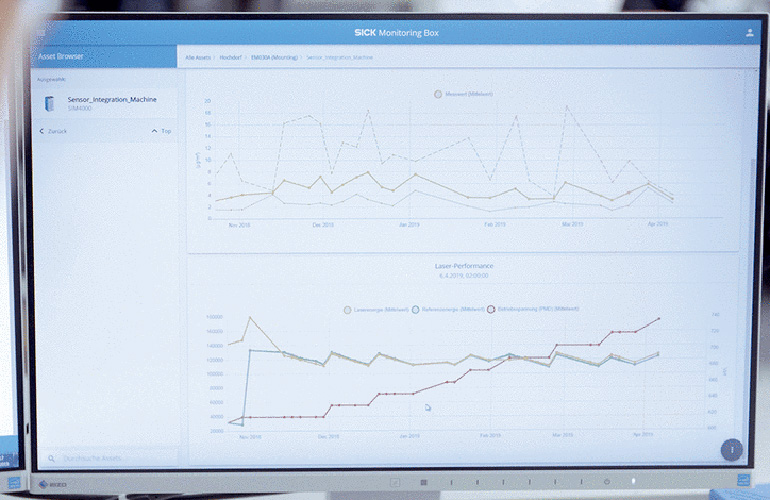Training a robot to recognize and pour water
Building the first robots to clean up ocean floor litter
SICK launches Monitoring Box for cloud-based sensor monitoring

SICK released its Monitoring Box software that enables access to sensor data for cloud-based monitoring. | Source: SICK
SICK has launched a product called Monitoring Box that enables access to sensor data for cloud-based condition monitoring. It visualizes status data from SICK sensors, offering customers added value from previously unused sensor data. The monitoring box allows for the visualization of internal device parameters to diagnose and monitor fault conditions. It consists of a browser application, server-side data management, an IoT Gateway and suitable predefined sensor apps for simple connection of SICK sensors.
Condition monitoring is the visualization and interpretation of vital parameters of machinery and sensors in real-time. This provides a few key benefits, including increased reaction time, reduction of downtimes, and reduction of costs for unplanned service interventions.
The Monitoring Box includes a Smart Service Gateway from SICK. This allows for short time storage, pre-processing of data, and secure data transmission. A cloud service is also provided for data security and long-term data backup. Lastly, the Monitoring App provides application-specific support for sensors and machinery. These are plug and play apps that are available as a subscription.
The comprehensive dashboard provided by Monitoring Box provides an overview of the status, name, and location, which includes job recommendations. Live status data provides all relevant data in real time. This includes device information and status, operating mode, and other data points that help to detect errors and malfunctions.
In addition, historical data is available to understand past issues and better predict the future. And lastly, issue/alert logs are also available and can be saved within a dedicated log. This log helps to provide an overview of past alerts and determine any irregularities within the device or process that can be detected and analyzed. The type of alerts can be customized based on the needs of the user.
In summary, the Monitoring Box provides:
- Cloud based condition monitoring platform – connect sensors and other data sources to your monitoring application
- Pre-defined Monitoring Apps – start using the software without programming
- User friendly Dashboard – can be used on mobile and desktop
- Alerting via Email – don‘t miss anomalies or warnings
- Gain insights – with Job Recommendations you receive recommendations for action
- Historical data – to help diagnose, interpretation is the basis for predictive maintenance
- Password protected access – via SICK ID
- Lower investment level – subscription updates & patches included
- All-in-one solution for condition monitoring – cloud, gateway, and App
The Monitoring Box is available for several SICK sensors, including safety and non-safety LiDAR, vision technology, barcode readers, RFID, and more.
The post SICK launches Monitoring Box for cloud-based sensor monitoring appeared first on The Robot Report.